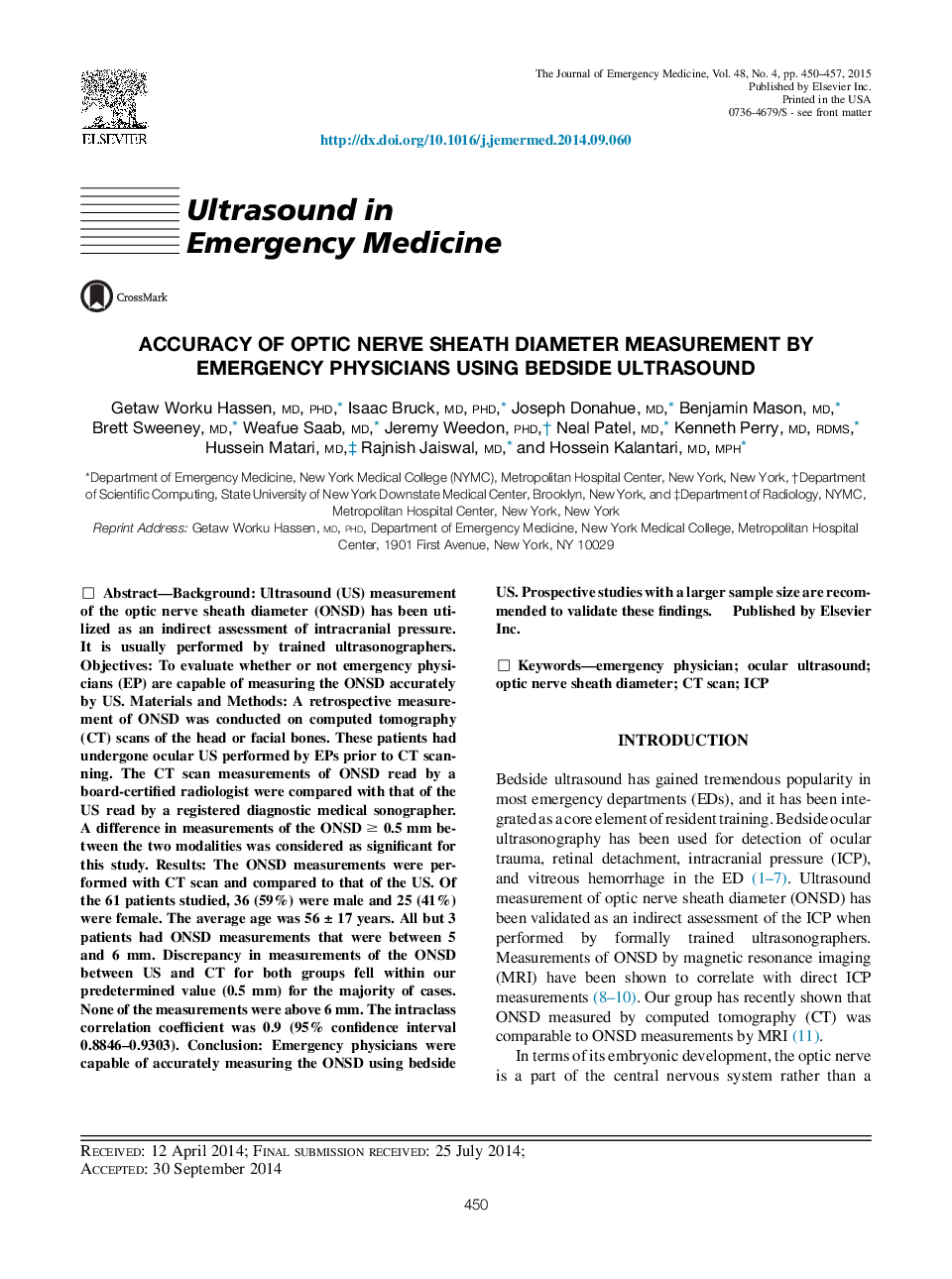| Article ID | Journal | Published Year | Pages | File Type |
|---|---|---|---|---|
| 3245865 | The Journal of Emergency Medicine | 2015 | 8 Pages |
BackgroundUltrasound (US) measurement of the optic nerve sheath diameter (ONSD) has been utilized as an indirect assessment of intracranial pressure. It is usually performed by trained ultrasonographers.ObjectivesTo evaluate whether or not emergency physicians (EP) are capable of measuring the ONSD accurately by US.Materials and MethodsA retrospective measurement of ONSD was conducted on computed tomography (CT) scans of the head or facial bones. These patients had undergone ocular US performed by EPs prior to CT scanning. The CT scan measurements of ONSD read by a board-certified radiologist were compared with that of the US read by a registered diagnostic medical sonographer. A difference in measurements of the ONSD ≥ 0.5 mm between the two modalities was considered as significant for this study.ResultsThe ONSD measurements were performed with CT scan and compared to that of the US. Of the 61 patients studied, 36 (59%) were male and 25 (41%) were female. The average age was 56 ± 17 years. All but 3 patients had ONSD measurements that were between 5 and 6 mm. Discrepancy in measurements of the ONSD between US and CT for both groups fell within our predetermined value (0.5 mm) for the majority of cases. None of the measurements were above 6 mm. The intraclass correlation coefficient was 0.9 (95% confidence interval 0.8846–0.9303).ConclusionEmergency physicians were capable of accurately measuring the ONSD using bedside US. Prospective studies with a larger sample size are recommended to validate these findings.
